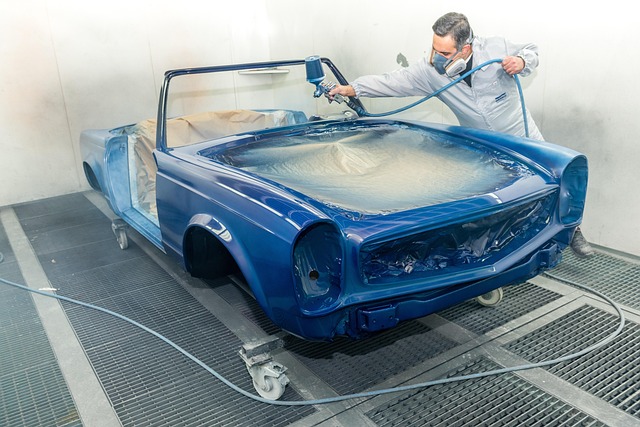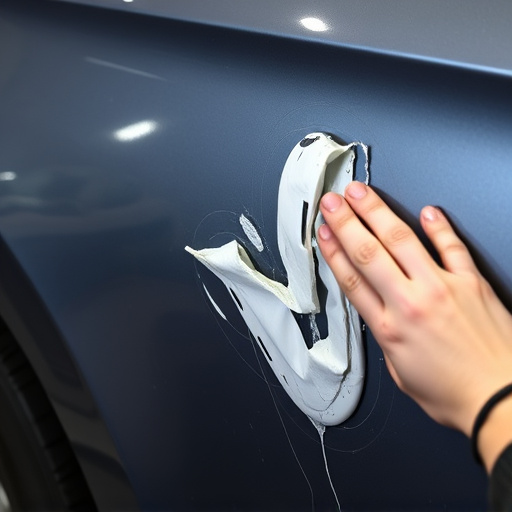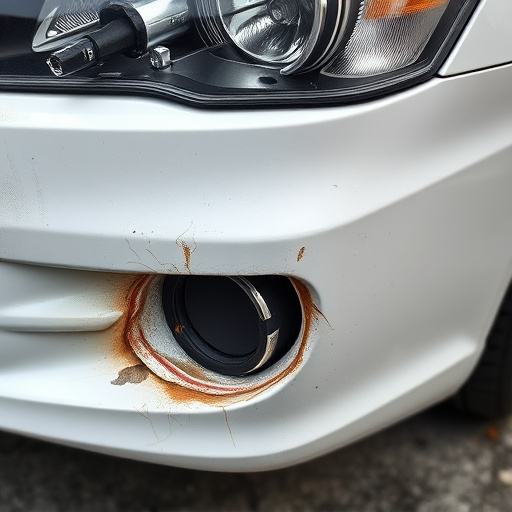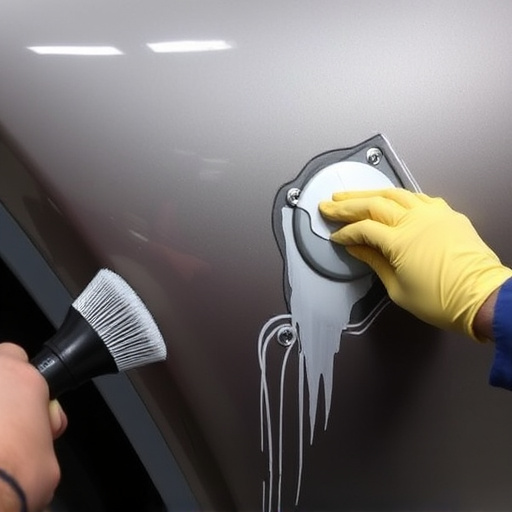Waterborne paint systems are an eco-friendly alternative in vehicle collision repair, reducing harmful fumes, volatile organic compounds (VOCs), and health risks while providing superior performance and durability. Their use minimizes environmental impact, promotes air quality, and reduces waste generation compared to traditional automotive paints.
Waterborne paint systems are revolutionizing the industry with their environmental benefits. This article delves into the composition, advantages, and comparative analysis of waterborne paints compared to traditional counterparts. By understanding what makes these systems eco-friendly, from their non-toxic components to reduced environmental impact, businesses and consumers can make informed decisions. Discover how waterborne paint systems contribute to a greener world without compromising quality or performance.
- The Composition of Waterborne Paint Systems
- Environmental Benefits of Using Waterborne Paints
- Comparative Analysis with Traditional Paints
The Composition of Waterborne Paint Systems

Waterborne paint systems are designed to be environmentally friendly, primarily due to their unique composition. Unlike traditional solvent-based paints, waterborne paints are suspended in water rather than toxic solvents. This fundamental difference makes them a safer and cleaner option for both application and disposal. The key components of these systems include pigment, resin, and various additives, all mixed in water to create a stable, paintable formula.
In the context of vehicle collision repair and car bodywork services, waterborne paints offer significant advantages. They reduce the risk of harmful fumes during application, making workshops safer for workers and nearby residents. Moreover, these paints often contain fewer volatile organic compounds (VOCs), contributing to improved air quality and a reduced carbon footprint. This not only benefits the environment but also ensures that vehicle bodywork is completed with minimal impact on public health.
Environmental Benefits of Using Waterborne Paints
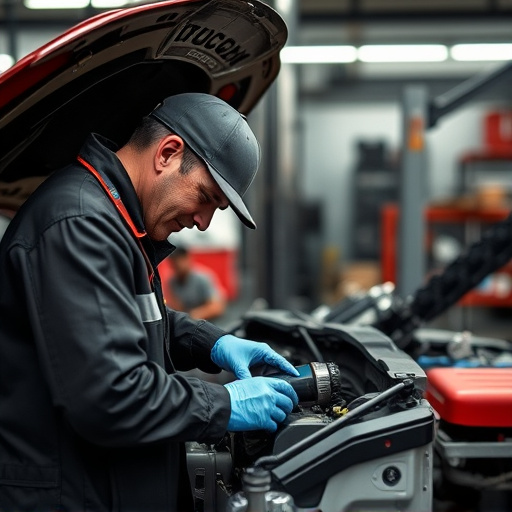
Waterborne paint systems offer a range of environmental benefits that make them an attractive and sustainable choice for various applications, including collision repair services and vehicle restoration. These paints are designed to minimize the use of harmful volatile organic compounds (VOCs), which are commonly found in traditional solvent-based paints. By reducing VOC emissions, waterborne paints contribute significantly to improved air quality, as these chemicals can have adverse effects on human health and the environment.
Furthermore, waterborne paint systems are known for their superior performance and durability, making them an eco-friendly option that requires less frequent reapplication. This longevity reduces waste generation associated with frequent repainting, which is particularly relevant in vehicle repair services where regular maintenance and restoration are common practices. The use of waterborne paints can thus lead to a more sustainable and healthier working environment for professionals in these industries.
Comparative Analysis with Traditional Paints

Waterborne paint systems offer a significant advantage over traditional paints when it comes to environmental impact. In a comparative analysis, waterborne systems stand out as a more sustainable option. These advanced paints are formulated with water as their primary solvent, replacing toxic chemicals often found in conventional automotive paints used at auto collision centers and car paint repair shops.
By eliminating volatile organic compounds (VOCs), waterborne paint systems reduce air pollution and greenhouse gas emissions. This not only contributes to better indoor air quality during application but also minimizes the environmental footprint of the entire auto bodywork process. Moreover, waterborne paints often provide excellent coverage and durability, ensuring efficient use of resources, which is a key aspect in promoting eco-friendly practices within the industry.
Waterborne paint systems are a significant step forward in sustainable painting practices, offering a low-VOC, environmentally conscious alternative to traditional options. By understanding their unique composition and comparing them to conventional paints, we can appreciate the numerous environmental benefits they bring. This innovative technology not only reduces harmful emissions but also provides long-lasting, high-quality finishes, making it a responsible choice for both consumers and the planet.



